
Home - Search - Browse - Alphabetic Index: 0- 1- 2- 3- 4- 5- 6- 7- 8- 9
A- B- C- D- E- F- G- H- I- J- K- L- M- N- O- P- Q- R- S- T- U- V- W- X- Y- Z
Ekspress
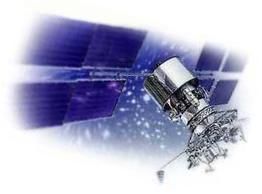 Ekspress Credit: NPO PM |
AKA: 11F639;EXPRESS;Sesat. Status: Operational 2000. First Launch: 2000-04-17. Last Launch: 2000-04-17. Number: 1 . Gross mass: 2,500 kg (5,500 lb).
Ekspress replaced the Gorizont spacecraft, with deployment to 13 geosynchronous positions beginning in 1994 and continuing beyond 2005.
Nine months after Gals 1 was launched, Ekspress 1 was inserted into a nearly geosynchronous orbit. Ekspress was to replace the widely used Gorizont spacecraft, and plans called for deployments at 13 locations (40 degrees , 53 degrees , 80 degrees , 90 degrees , 96.5 degrees , 99 degrees , 103 degrees , 140 degrees , 145 degrees , 205 degrees , 322.5 degrees , 346 degrees , and 349 degrees , all East longitude) just for domestic needs and to support the Intersputnik Telecommunications Association. Additional Ekspress spacecraft were to be sold to foreign companies, e.g., Rimsat, Ltd. In fact, only the first two satellites launched was of the original configuration. Further state-sponsored launches were not funded, however a total of 12, many heavily modified and with European electronics packages, were launched through 2005.
While the Express solar arrays were identical to those on Gals, the spacecraft bus had slightly smaller dimensions of 3.6 m by 6.1 m. A typical Ekspress payload included 10 C-band and two Ku-band transponders. The improved Ekspress-A model was launched from 1999.
The improved Express-AM-1 satellite first flew in 2004 and was produced by Reshetnev NPO PM jointly with NEC/Toshiba Space Systems for the Russian Satellite Communications Company. The satellite was designed to provide a package of communications services (digital TV, telephony, video conferencing, data transmission, the Internet access) and to deploy satellite networks by applying VSAT technology. The Express-AM spacecraft was equipped with up-to-date antenna systems, to provide high-quality communications and uniform coverage in C- and Ku- bands.
Satellite characteristics
- Orbit Geostationary
- Station keeping accuracy ±0,05 deg (N&S / E&W)
- Operational life-time 12 years
- Stabilization Three axes
- Payload electric power 4200 W
- Mass of payload 570 kg
- Mass of satellite 2600 kg
- Power supply 6000 W
- Transponder parameters:
- C-band: 9 transponders; bandwidth at -1dB, 40 MHz; output power, 40 W (8 transponders), 120 W (1 transponder)
- Ku-band:18 transponders, bandwidth at -1dB, 54 MHz; output power 95-100 W
- L-band: 1 transponder; bandwidth at -1dB, 0,5 MHz; output power, 30 W
More at: Ekspress.
| SESAT 1 / Eutelsat 16C Null |
Family: Communications, Geosynchronous orbit. Country: Russia. Engines: SPT-100. Launch Vehicles: Proton, Proton-K/DM-2, Proton-K/DM-2M, Proton-M/Briz-M. Launch Sites: Baikonur, Baikonur LC200/39. Agency: Reshetnev bureau. Bibliography: 102, 2, 274, 4, 552, 554, 6, 67, 6473, 12304, 12305.
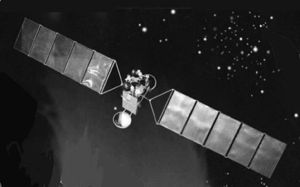 | Ekspress Credit: Dmitry Pieson |
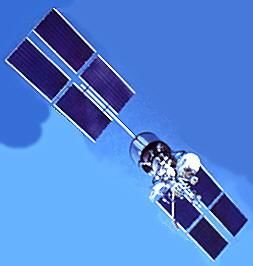 | Ekspress |
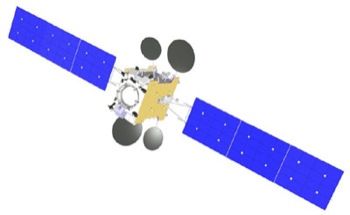 | Amos 5 Credit: Manufacturer Image |
 | Ekspress AM-22 Credit: Manufacturer Image |
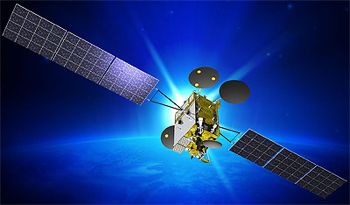 | Ekspress AM-8 Credit: Manufacturer Image |
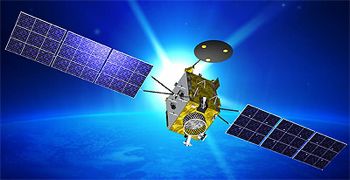 | Ekspress AT2 Credit: Manufacturer Image |
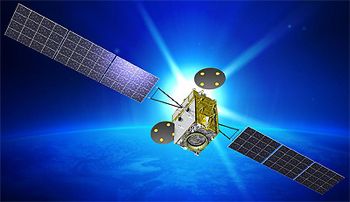 | Kazsat-3 Credit: Manufacturer Image |
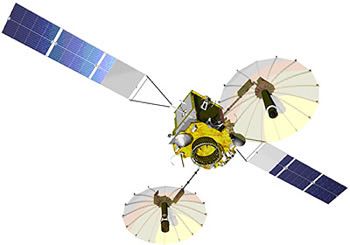 | Luch-5B Credit: Manufacturer Image |
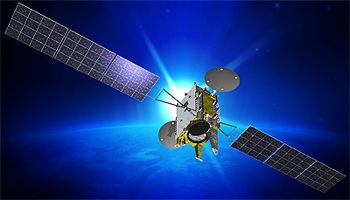 | Lybid 1 Credit: Manufacturer Image |
 | Sesat Credit: Manufacturer Image |
 | Cosmos 2471 Credit: Manufacturer Image |
 | Uragan-K2 Credit: Manufacturer Image |
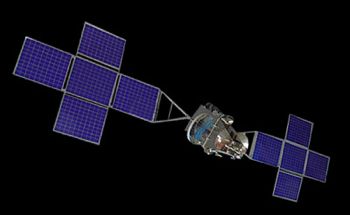 | Zohreh 1 Credit: Manufacturer Image |
2000 April 17 - . 21:06 GMT - . Launch Site: Baikonur. Launch Complex: Baikonur LC200/39. LV Family: Proton. Launch Vehicle: Proton-K/DM-2M.
- Sesat - .
Mass: 2,500 kg (5,500 lb). Nation: Europe.
Agency: Eutelsat.
Manufacturer: Reshetnev bureau.
Class: Communications.
Type: Civilian communications satellite. Spacecraft Bus: Gals.
Spacecraft: Ekspress.
USAF Sat Cat: 26243 . COSPAR: 2000-019A. Apogee: 35,802 km (22,246 mi). Perigee: 35,771 km (22,227 mi). Inclination: 0.10 deg. Period: 1,436.10 min.
Sesat (Siberia-Europe Satellite) used an MSS-2500-GSO (Gals/Ekspress) satellite bus built by NPO PM of Krasnoyarsk, with an Alcatel Espace France payload of 18 Ku-band transponders. The satellite had 8 Fakel SPD-100 plasma thrusters for stationkeeping. Eutelsat operated their Hot Bird fleet of European television broadcast satellites since the 1980's, but the venture into broadcasting to Siberia represented a new step for them. Stationed at 36 deg E. Positioned in geosynchronous orbit at 39 deg E in 2000. As of 4 September 2001 located at 35.97 deg E drifting at 0.005 deg E per day. As of 2007 Mar 9 located at 35.92E drifting at 0.004E degrees per day.
Back to top of page
Home - Search - Browse - Alphabetic Index: 0- 1- 2- 3- 4- 5- 6- 7- 8- 9
A- B- C- D- E- F- G- H- I- J- K- L- M- N- O- P- Q- R- S- T- U- V- W- X- Y- Z
© 1997-2019 Mark Wade - Contact
© / Conditions for Use